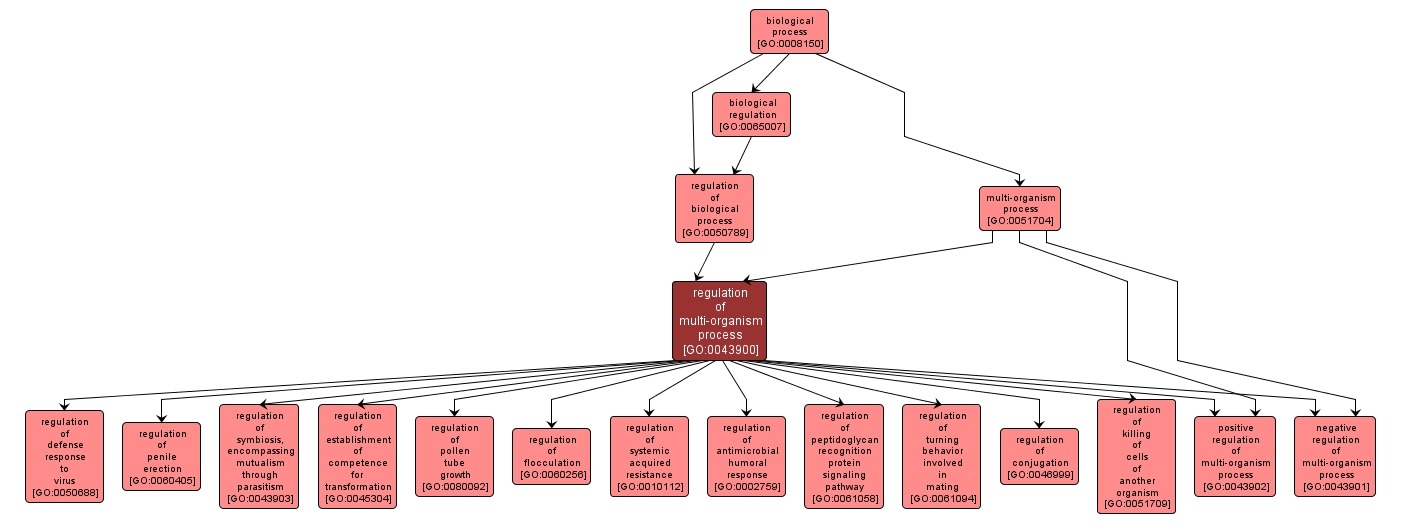GO TERM SUMMARY
|
| Name: |
regulation of multi-organism process |
| Acc: |
GO:0043900 |
| Aspect: |
Biological Process |
| Desc: |
Any process that modulates the frequency, rate or extent of a multi-organism process, a process by which an organism has an effect on another organism of the same or different species. |
|

|
INTERACTIVE GO GRAPH
|














